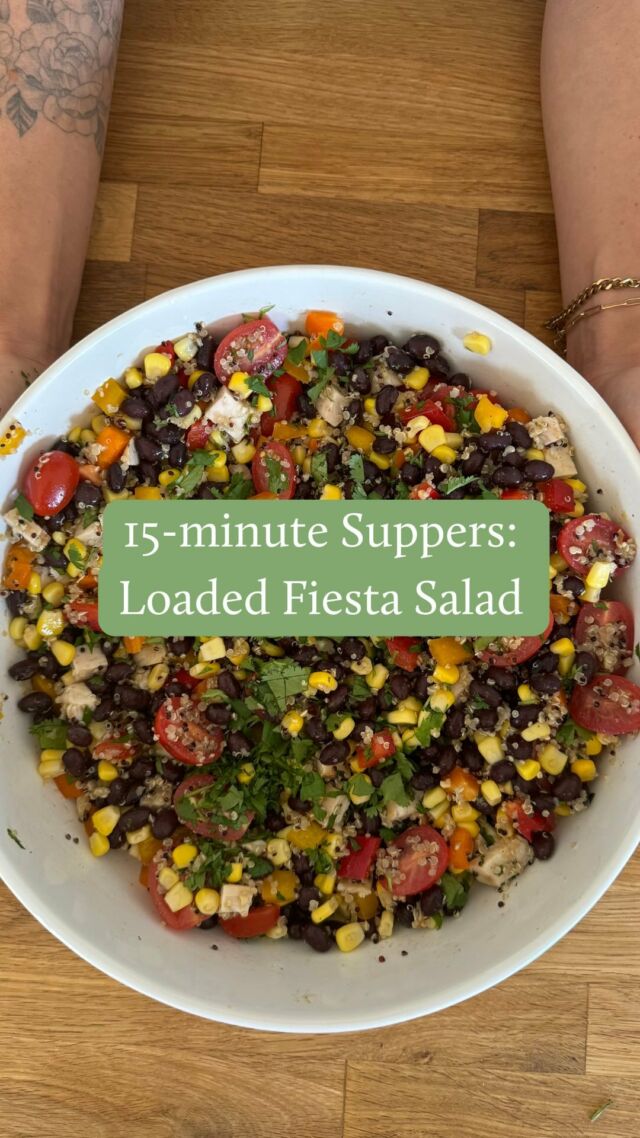Navigating the tricky world of feeding toddlers and young kids can be exhausting. Especially for those who are parents of picky eaters — I know this from first-hand experience.

Although my kids are both fairly good eaters, they have each put us through our paces at mealtimes, whether it’s refusing to eat, throwing food and making a mess, or requesting snacks around the clock. Here are three common parenting strategies I often witness and have tested myself that DON’T work (and often perpetuate the problem) and three strategies that can transform mealtimes from dreadful to peaceful:
COMMON MEALTIME MISTAKE #1: PRIMARILY FOCUSING ON THE FOOD
The word that comes to mind here is pressure. As soon as your child, especially if she’s a picky eater, feels pressure to eat something, she will back right off—the opposite of what you’re hoping for. Parents of picky eaters often dread mealtimes because they foresee a struggle from beginning to bitter end. From the moment you decide what you’re going to make, to when you clear your child’s full plate of uneaten food, you feel stressed and frustrated. You gear yourself up for the battle that you know is coming (and that you often lose), and hope that your child eats something healthy—even a few bites. Common phrases you might use include:
- “It’s dinner time—come to the table and eat!”
- “Please try your peas—they are good for you!”
- “You can’t have dessert unless you have at least 5 bites of your meal”
- “No you cannot have more bread—you’ve hardly touched your vegetables or meat!”
Although we as parents have the best intentions for our fussy eaters, we often enable picky eating and perpetuate the problem by putting all of the focus on food.
WHAT TO DO INSTEAD: FOCUS ON FAMILY TIME
Mealtimes don’t have to bring on anxiety and dread if you can master the art of backing off. It’s imperative that you take the pressure off (both yourself and your child) to make mealtimes more peaceful.
This can be really (ahem… excruciatingly) hard, especially if you feel that your child isn’t eating well daily. Although not an instantaneous picky eating fix, over time, taking the focus off of the food (and what your child is or isn’t eating) and focusing more on family time (talking about everyone’s day, asking about what happened at school or camp, talking about your upcoming family trip etc.) makes your child feel at ease and will increase the likelihood of her trying things on her own. That being said, it’s okay to mention food now and again during meals. Healthy chitchat about food might be “mmm, I love this asparagus- we haven’t had it in a while and I forgot how much I like it”, or “I see that you tried your chicken—how did you like it?” instead of “I’m not going to ask you again—you need to have a bite of your chicken!”
As important as taking the focus off of the food is, it’s also important to pair this strategy with my next one: Establishing (and calmly reminding your child of) mealtime boundaries.
COMMON MEALTIME MISTAKE #2: LETTING YOUR KIDS RUN THE SHOW
Many parents feel as though mealtimes are out of their control — they harp and fight with their kids to eat certain foods, yet ultimately, their kids are in charge. Your child refuses to eat, so you give in and stop asking him to come to the table. He complains about what’s served, so you make him a peanut butter sandwich because you know he’ll eat it. He whines about feeling hungry before bed (even though he didn’t eat at dinnertime) so you give him yogurt and a banana in hopes that he’ll go to bed peacefully and not wake up hungry. I’ve been there and know how easy it is to give in. You feel frustrated and defeated and you don’t want your child to starve – I get it. But unfortunately, letting your kids run the show will enable picky eating tendencies and will make your life more and more frustrating over time.

WHAT TO DO INSTEAD: SET HEALTHY MEALTIME BOUNDARIES AND STICK TO THEM
By establishing some appropriate mealtime boundaries with your kids (and enforcing them consistently), you can regain control over mealtimes (the what’s, where’s and when’s of feeding) and allow your kids to take care of the rest (whether and how much they eat). This is the cornerstone of childhood feeding expert Ellyn Satter’s Division of Responsibility. Parents are in charge of what is served, where it is served and when it is served. Kids are in charge of whether and how much they eat. Establishing these boundaries early on (in infancy and early toddlerhood) makes things a lot easier as they get older, but these boundaries can be set at any time (the older they are, the more patient you’ll have to be).
Some of our mealtime boundaries are as follows:
- Everyone must come to the table for meals, but there is no rule that they have to eat. Maryann Jacobsen, RD talks about this strategy in her blog post “End Mealtime Battles Forever With These 5 Simple Words“, and in it explains why this phrase is so transformative. The five words are: YOU DON’T HAVE TO EAT. When my son says “But I’m not hungry” or “I don’t want spaghetti again!” I calmly reply “You do not have to eat, but it’s mealtime and you must come to the table.” Nine times out of 10, he eats a fair amount of his meal happily. My kids aren’t excused until at least 10-15 minutes have past and must ask to be excused. If you have a slow eater, you may want to set a timer for 30 minutes so that meals don’t drag on forever and ever. This allows your child to better pace him/herself during a meal.
- There are no toys, screens, or other distractions at meals: we reserve mealtime for family/catching up time and discourage mindless/distracted eating.
- Mealtime manners must be followed: sitting properly at the table, not throwing food or making rude comments, using age-appropriate utensils and being polite are rules that we keep in our house.
- There’s no short-order cooking: Although I offer lots of variety and I always serve at least one food that I know my kids like, there is one meal (and only one) served.
- The kitchen is closed after mealtime: If I feel that my kids haven’t eaten enough, I remind them that it’s a good idea to make sure that their tummies are satisfied because the kitchen will be closed until __ o’clock (or the next morning). Requests or demands for snacks outside of these times are gently turned down, with a reminder that they had a chance to eat at the last meal or snack, and they chose not to. Over time, kids learn how to regulate their appetite healthfully this way.
These are our personal mealtime boundaries and might work well for your family too. Know that each family is unique and you should tailor your own to what works for you and your family.
COMMON MEALTIME MISTAKE #3: ASSUMING YOUR CHILD WON’T EAT IT
I often hear parents say “Don’t bother serving him any veggies — he won’t eat them anyway,” often right in front of their child. This well-meaning strategy (after all, you don’t want food to be wasted, especially at a friend’s or family member’s house) often perpetuates picky eating two-fold: it makes a child believe that he does not and will not ever like that food (and yay! he doesn’t even have to try it again!), as well as it doesn’t give him a fair chance to warm up to it (kids often need several exposures to a food before they feel safe enough to taste it).
A recent study out of Aston University in the UK tested out “the 3 R’s” (Repetition, Role modelling, and Reward) of feeding with 115 children aged two to four. These children were separated into four groups and for 14 days served vegetables that had been previously rejected. Those kids who were offered a vegetable several times (repetition), whose parents also ate the vegetable happily (role-modelled) and who were offered verbal praise for trying a vegetable (rewarded) ate more than four times the amount of vegetables than they had prior to the study. Even those who were exposed to only two R’s (repetition and reward) ate significantly more than the control group.

WHAT TO DO INSTEAD: DON’T ASSUME
We’ve known for a long time that kids need repeated (and non-pressured) exposure to certain foods (sometimes 15 or more times) to warm up to them, but parents – me included – are often quick to assume that their child will not even touch it, so they don’t bother serving it. It’s important not to assume. Recently my son who is four and a half, all on his own, ate salad for the first time and loved it. Instead of saying “Oh, you won’t like it” (which I almost did!) when my son asked for a helping of salad, I gave him the benefit of the doubt and served him some. Much to everyone’s surprise, he gobbled up the whole thing and now eats salad regularly. Know that kids’ palates are ever-changing and what your child doesn’t like one day (or for several years) might be their new favourite food the next day.

Did you know that we offer personalized nutrition counselling for kids and families? If this is something you’d like to learn more about, please visit The Centre for Family Nutrition.






![[AD] It’s Day 6 of my 15-Minute Supper Series and today we’re putting a delicious twist on a classic BLT to make it nourishing and meal-worthy 🤤
Make sure to comment “Spud” and I’ll send you my top dietitian tips for feeding your family on busy weeknights along with a huge list of meal ideas!
This pasta salad takes no time at all to throw together and has everything you need for a nourishing meal. I always make extra bacon for things like this, but if you don’t have any cooked bacon I find cooking it in the airfryer or stovetop the quickest 🥓
I find that this salad lasts 2-3 days in the fridge without getting too soggy. You can also add in fresh lettuce to crisp it up or add the dressing when you eat it.
I ordered all of my groceries from @spuddelivers, which always saves me time and effort and gives me peace of mind knowing that I’m using high-quality, local and sustainable ingredients. I love that they come straight to my door the day after ordering 🙌🏻
Let’s make it!
Ingredients:
* 10 slices bacon cooked and diced
* 12 ounces pasta cooked and cooled
* 1 cup homemade Ranch dressing
* 1 ½ cup baby tomatoes diced
* ½ avocado diced
* feta
* ⅓ cup red onion diced
* 1 cup romaine lettuce
* fresh parsley for garnish optional
Homemade ranch dressing:
* ¾ cup mayonnaise
* ½ cup sour cream or Greek yogurt
* ½ teaspoon dried chives
* ½ teaspoon dried parsley
* ½ teaspoon dried dill weed
* ¼ teaspoon garlic powder
* ¼ teaspoon onion powder
* Salt and pepper to taste
Make it:
1. Blend all Ranch dressing ingredients together in a small blender (or whisk by hand) and set aside.
2. In a large bowl assemble the pasta, tomatoes, avocado, cheese, red onion, lettuce and bacon.
3. Pour the dressing over and toss to combine.
4. Garnish with parsley and serve.
You are going to LOVE this meal-worthy salad, I promise!
Comment SPUD to receive my top dietitian-approved tips for feeding your family during the week, a long list of ideas, and a curated shopping list with all of the ingredients for this recipe + all of the other ideas that I share in this resource!
#sponsored #spuddelivers #15minutemeals #whatsfordinner #easymealideas #dietitianapproved](https://www.sarahremmer.com/wp-content/uploads/sb-instagram-feed-images/438745920_798281295514125_2547899647147267180_nfull.jpg)
Comments
Carrie says
In the last year my 8 year old has decided she won’t eat certain foods that happen to be staples in our diet (oatmeal, rice and beans, cooked broccoli). Our diet hasn’t changed significantly. We’ve always eaten these foods.
We have strict meal time rules of 1. Mom must serve you the same food as everyone else unless you pay $20 and pre order a specialty item (the price goes up to $40 if its a dinner I’ve worked hard on) (and to kids that get no allowance that’s an unconscionable amount of money) 2. You don’t have to eat, but should try everything.
This child has skipped enough meals that her moods have significantly changed. Her skin tone is lackluster, she’s always grouchy and quick to complain, even quicker to anger. My gut says that she’s become permanently hangry.
She is growing healthy.
Sarah Remmer says
Hey Carrie. Thanks for reaching out, I’d love to chat more about your daughter. It’s great that your are following mealtime rules such as not catering to your kids (what parent has time for that!), but one thing to watch out for is pressuring her to try everything. This can lead to even more rebellion at the dinner table. I’d be interested to hear more about the meal time family dynamic, and your daughters overall nutrition intake. Please feel free to email me at sarah@sarahremmer.com, or email my associate RD Kathryn (who handles my counselling practice) at kathryn@sarahremmer.com. We are here to help 🙂
Jasmeet says
Hi Sarah,
I have a 4 year old she is going to school also she is a picky eater she always wants to play when I say it’s time to eat reply is can I play then I have to shout at her to feed her she wants me to feed her she doesn’t want to use her own hands and if she is eating by herself she takes forever I have a 4 month baby too I don’t t want him to be like her I know it’s my mistake too that she is spoiled but how can I fix it now her lunch box comes back uneaten I’m so tired and feel guilty of shouting at her all the time it’s affecting our relationship but she is underweight I just want her to eat healthy
Thanks
Sarah Remmer says
Hi Jasmeet. The mom in me wants to reach out and give you a big squeeze. You’re doing your best, but some days are harder than others. I totally get it. I’m here to help with the picky eating and helping you and your daughter have a healthy food relationship. Please contact me at sarah@sarahremmer or if you’re looking for one-to-one counselling please get in touch with my lead counselling dietitian Kathryn at kathryn@sarahremmer.com. She can help set you up and get you started. You got this 🙂
Jessica says
Your website is really cool and this is a great inspiring article. Thanks for your all post!
Holley Grainger says
Thanks for rounding up this information, Sarah, and for sharing not only the don’ts but also the do’s. I just forwarded the link to a mom’s group I spoke to recently as well as my parents, husband and in-laws. I know they will also find it very helpful!
sarahrem says
My pleasure! Thanks Holley!